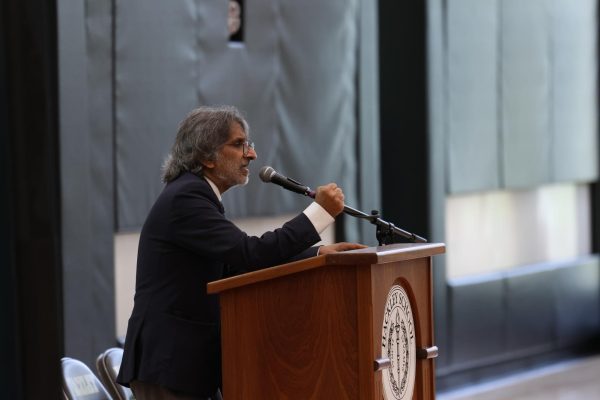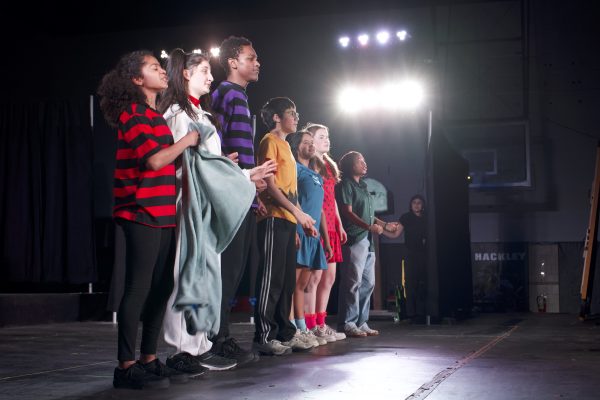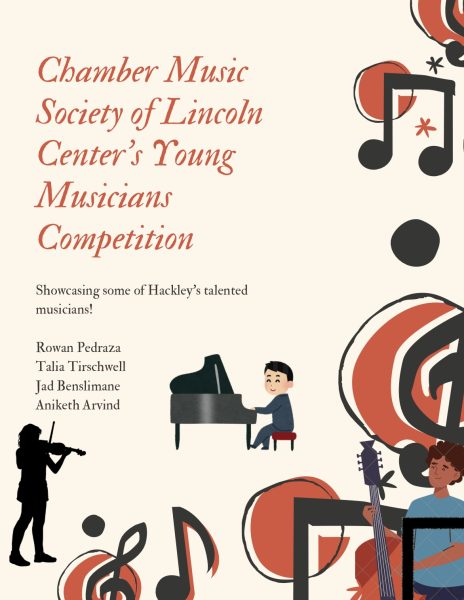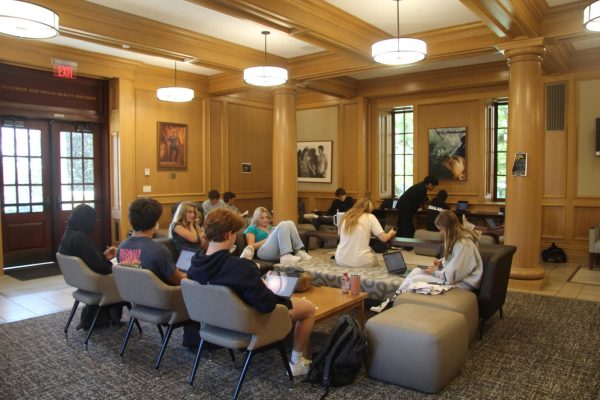It’s Time to Revise the Dress Code to Reflect Diversity and Inclusivity
The beginning of a new school year has sparked conversation surrounding the return of one of Hackley’s more controversial policies, the dress code. A significant amount of disagreement throughout the community concerning inclusivity and breaches of social rights has been the primary cause of these issues.
Last year, stress and pressure brought about by the COVID-19 pandemic led administrators to decide that relaxing the rules of the dress code would be in the best interest of the students and their families. While some saw the lack of clothing guidelines as a positive, others were not as content.
“There was concern expressed to me in the community both about what the dress code is and the lack of dress code. I think it’s something that people talk about and think about a lot. There’s not an agreement on what the dress code should be, and once you even get past what it should be, the enforcement of the dress code is another issue. It’s a really complicated topic and I think it’s one of the reasons we want to have the conversation this year with the community, students, and families” said Head of School, Michael Wirtz.
Some current dress code rules include no blue denim, no athletic attire, no leggings/sweatpants, no hats indoors (religious exceptions), no sleepwear, no graphics or large logos (must be Hackley), no garments that reveal underwear, and no strapless tops. While these rules might seem fairly strict, they’re straightforward compared to the dress code expectations of previous years, consisting of neutral colored shoes, khaki pants, collared shirts, and hair length limits for boys.
According to French teacher and tenth-grade dean, Madame Michelle Crepeau, the absence of a dress code in the classroom seemed to have a “slippery slope” effect on some students.
“Everything felt a little more relaxed, but I do think that successful learning took place,” she said, “I think some other rules might have felt a little less enforced as well. So I do believe that it has a little bit of trickle-down effect of loosening rules. Maybe students were more relaxed with their language use or other things that I think are signs of respect.” said Madame Crepeau.
While many pre-COVID clothing rules remain the same, several students have risen up against the alleged sexist and misogynistic motivations behind having a dress code. Specific rules like, “leggings may not be worn on their own,” or “skirts and dresses must fall at least mid-thigh,” have caused conflict between administration and female students. Many believe that those specific rules exist to fuel the objectification of young women.
For example, Tenth Grade Student Body President, EJ Regalado stands in opposition to certain attire rules that she and many other students deem to be unnecessary.
“It’s hard for me to comply with the shorts-length rule,” she said, “I don’t think it’s a necessary aspect of the dress code and it personally makes me feel like I can’t express myself and be comfortable. The length of my shorts or dress does not define my learning ability, my mindset, or anything of the sort. I don’t think it affects the students around me either. It honestly makes me feel uncomfortable to think that the length of my shorts plays such an important role in how I’m viewed at school,” said EJ.
Despite common belief, a survey on the student body concluded that the number of people being reprimanded for dress code, depending on their gender, was equally distributed among male students, female students, and non-binary students. Additionally, it was found that only 27.4% of students have been caught breaking dress code rules this year while 72.6% have not.
Over the summer, a social media account on Instagram known as, @hackley_dresscode_petition, was created in hopes of combatting rules like no leggings, or no spaghetti straps. However, those who are in support of the dress code are quick to clarify its purpose within the Hackley community.
“I think respecting the dress code is a way of showing that you’re coming to school serious about your learning as well as an involved member of the community. I think that the dress code is great to have, but it’s very important that students buy-in and be a part of the conversation to make sure that they feel respected and valued,” Madame Crepeau said.
As far as any serious revisions to dress code policy itself are concerned, not much has seemed to change since the last time it was in effect. “There were fewer specifics, I would say. We want to have a clear dress code. We want to have clear accountability around it. We want to make sure that we’ve gathered some community input on shaping it. It was actually more about process and structure rather than a particular outcome. We’ve heard some in the community say that they want the dress code to lean towards a more relaxed side, similar to what it was last year. I’ve heard from others, no joke, that they want a uniform,” Mr. Wirtz said.
Alternatives to a dress code, more specifically a uniform, have continued to remain a topic of discussion throughout the community. While around 81.6% of students stated that they would prefer a relaxed dress code, 9.9% of students stated that they would instead prefer a uniform. Senior, Dionne Chen, who is in support of uniforms, highlighted how getting rid of the current dress code would promote financial inclusivity.
“To be able to follow the current dress code, the school forces you to have to buy a ton of clothes. I have to go out of my way to buy clothing that is in dress code despite the fact that I don’t end up wearing it outside of a school setting. For kids that don’t have that much money, it’s a lot harder to buy and find affordable clothing that fits the dress code,” Dionne said.
The community’s push for inclusivity and diversity has been the reason for many past revisions made to the dress code as well as possible revisions to be made in the future. In regards to whether or not he believes that the current dress code is fair, “I think there’s some important things we need to do, which is why we’re working on it. This is a progressive moment for us as a school. Let’s have a conversation about it, let’s take a look at it,” Mr. Wirtz said.






![Although the affect of COVID-19 has been on a decline with less cases and deaths allowing most of us to remain mask free, people on the Hilltop are still choosing to mask up. Personal health concerns as well as helping an elderly neighbor are reasons as to why middle school science teacher Emma Olsen still wears a mask years after the COVID-19 pandemic began. Since I am helping take care of him, you know I go over to work with his dogs, that kind of thing; I dont want to bring [the virus] home to him, Ms. Olsen said.](https://hsdial.org/wp-content/uploads/2024/03/IMG_1713-450x600.jpg)




